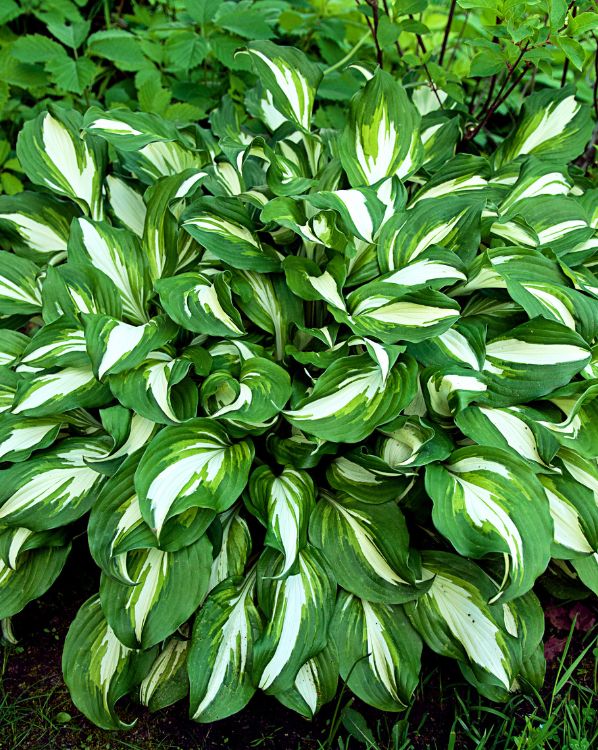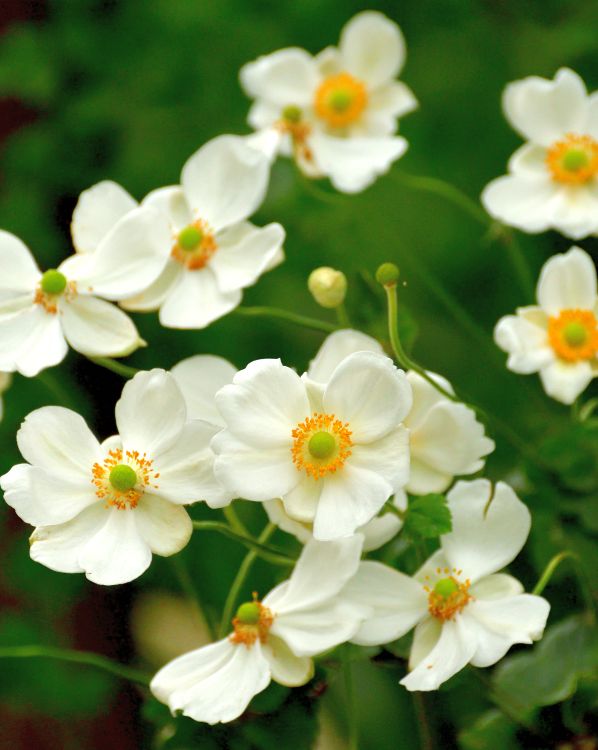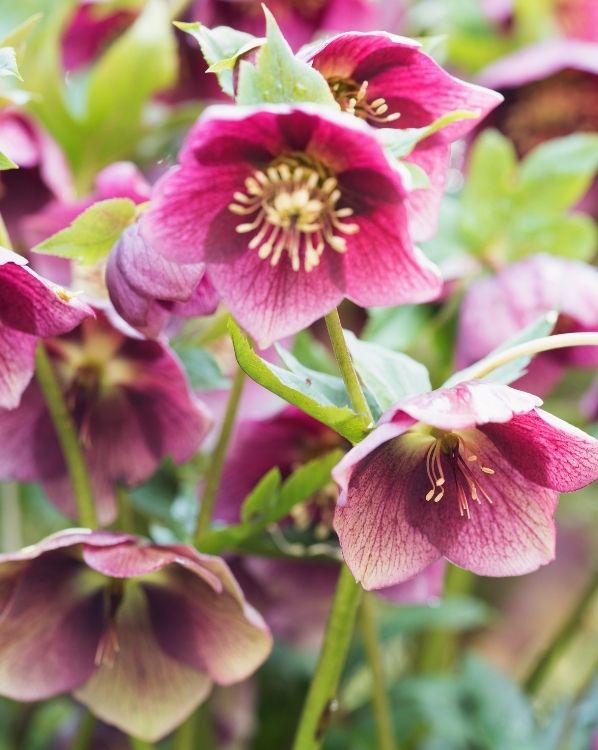When it comes to creating a lush and vibrant garden, few plants are as beloved as the hydrangea.
Their large, showy blooms bring elegance and color to any garden space.
But to truly make your hydrangeas stand out and thrive, choosing the right companion plants is crucial.
Over the years, I’ve experimented with many different plant combinations in my own garden.
And let me tell you, the right companions can make all the difference in creating a harmonious and visually stunning garden.
In this article, I’ll share with you 14 of the best hydrangea companion plants based on my personal experiences and gardening knowledge.
Each of these plants complements hydrangeas in unique ways, whether by providing contrast in color, texture, or height, or by helping to improve the overall health and beauty of your garden.
1. Hostas

Hostas are one of my go-to companions for hydrangeas.
Their large, lush leaves provide a beautiful contrast to the delicate blooms of hydrangeas.
The broad foliage of hostas not only fills in the space around hydrangeas but also helps to keep the soil cool and moist, which hydrangeas love.
I’ve found that planting hostas around the base of my hydrangeas creates a layered effect that adds depth and interest to the garden.
Plus, both plants thrive in partial shade, making them perfect partners in a woodland garden setting.
2. Ferns

Ferns are another excellent companion for hydrangeas, especially if you’re aiming for a more natural, woodland-style garden.
Their feathery fronds contrast nicely with the bold hydrangea blooms, creating a soft and lush backdrop.
One of the things I love most about ferns is their versatility.
They thrive in the same moist, shaded conditions that hydrangeas prefer, and they add a delicate texture to the garden that really makes the hydrangeas pop.
In my garden, I’ve paired my hydrangeas with a variety of ferns, from the classic Boston fern to the more exotic Japanese painted fern, and the results have always been stunning.
3. Astilbes

Astilbes are a fantastic choice if you’re looking to add a pop of color to your hydrangea garden.
These perennials produce feathery plumes of flowers in shades of pink, red, and white, which complement the pastel tones of hydrangea blooms beautifully.
Astilbes are also shade-loving plants that prefer moist soil, so they thrive in the same conditions as hydrangeas.
I’ve found that astilbes not only add vibrant color to the garden but also attract pollinators like bees and butterflies, which adds another layer of life to the space.
Planting astilbes alongside hydrangeas creates a lively and dynamic display that will catch the eye of anyone who visits your garden.
4. Japanese Anemones

Japanese anemones are a lovely choice for late-season interest in the garden.
These plants bloom in late summer to early fall, just as hydrangeas are beginning to fade, extending the season of color in your garden.
Their delicate, cup-shaped flowers in shades of pink, white, and lavender complement the hydrangea’s color palette, creating a seamless transition from summer to fall.
In my garden, I’ve planted Japanese anemones behind my hydrangeas, where their tall, graceful stems rise above the hydrangea blooms, adding height and movement to the garden.
They’re easy to grow and require minimal care, making them a perfect companion for hydrangeas.
5. Heucheras (Coral Bells)

Heucheras, also known as coral bells, are a versatile companion plant for hydrangeas.
These perennials are known for their stunning foliage, which comes in a wide range of colors, including deep purples, bright greens, and even metallic tones.
The colorful leaves of heucheras provide a striking contrast to the softer tones of hydrangea blooms, creating a vibrant and eye-catching display.
In my experience, heucheras are incredibly easy to grow and maintain.
They thrive in the dappled shade and moist soil that hydrangeas love, and they add a splash of color to the garden long after the hydrangeas have finished blooming.
6. Tiarella (Foamflower)

Tiarella, or foamflower, is a charming ground cover that pairs beautifully with hydrangeas.
This plant produces delicate, frothy flowers in shades of white or pink, which create a lovely contrast with the larger, bolder hydrangea blooms.
What I love about tiarella is its ability to spread and fill in gaps in the garden, creating a lush, green carpet that helps to suppress weeds and retain soil moisture.
Tiarella’s foliage is also quite attractive, often featuring unique patterns and shades that add interest even when the plant isn’t in bloom.
In my garden, I’ve planted tiarella at the base of my hydrangeas, where it forms a soft, green backdrop that allows the hydrangea flowers to really stand out.
7. Brunnera (Siberian Bugloss)

Brunnera, also known as Siberian bugloss, is a shade-loving perennial that makes an excellent companion for hydrangeas.
Its heart-shaped leaves, often with striking silver patterns, add a touch of elegance and texture to the garden.
In the spring, brunnera produces delicate blue flowers that resemble forget-me-nots, which provide a lovely contrast to the hydrangea’s blooms.
I’ve found that brunnera is particularly useful in adding interest to the garden before the hydrangeas come into full bloom.
The foliage of brunnera stays attractive throughout the growing season, ensuring that your garden looks beautiful from spring to fall.
Planting brunnera alongside your hydrangeas can create a serene and sophisticated garden space that you’ll enjoy all season long.
8. Clematis

If you’re looking to add vertical interest to your hydrangea garden, clematis is the perfect choice.
This climbing vine produces large, showy flowers in a variety of colors, from deep purples to bright pinks, which can beautifully complement the pastel tones of hydrangeas.
I’ve always loved how clematis can grow up and around the hydrangeas, adding height and a sense of drama to the garden.
One of my favorite combinations is to pair a white or pale pink hydrangea with a deep purple clematis— the contrast is simply stunning.
Clematis does well in the same partially shaded conditions as hydrangeas and prefers its roots to be cool, making it a great companion plant.
9. Bleeding Heart (Dicentra)

Bleeding heart, with its delicate, heart-shaped flowers, is a classic companion plant for hydrangeas.
This plant thrives in the shade and produces beautiful pink or white flowers in the spring, just as hydrangeas are starting to leaf out.
The arching stems of bleeding heart add a graceful touch to the garden, while the soft colors of the flowers complement the pastel hues of hydrangea blooms.
In my garden, I’ve found that bleeding hearts and hydrangeas create a romantic, cottage garden feel that’s hard to beat.
They both prefer the same cool, moist soil, and when planted together, they create a lush, layered effect that’s truly enchanting.
10. Lungwort (Pulmonaria)

Lungwort is a hardy perennial that makes a fantastic companion for hydrangeas, especially in shaded garden areas.
This plant is known for its speckled foliage and clusters of small, tubular flowers that range in color from pink to blue.
The unique variegation of lungwort’s leaves provides a striking contrast to the solid green leaves of hydrangeas, adding visual interest even when the plant isn’t in bloom.
One of the reasons I love lungwort is its early bloom time.
It flowers in early spring, providing much-needed color before the hydrangeas start their show.
Lungwort is also incredibly easy to grow and maintain, making it a great choice for gardeners of all experience levels.
11. Japanese Forest Grass (Hakonechloa)

Japanese forest grass is a beautiful ornamental grass that pairs wonderfully with hydrangeas.
Its graceful, arching blades add movement and texture to the garden, creating a contrast with the more rigid structure of hydrangeas.
The golden or variegated leaves of Japanese forest grass provide a lovely backdrop for hydrangea blooms, and the plant’s preference for shady, moist conditions makes it an ideal companion.
In my garden, I’ve used Japanese forest grass to line the borders of my hydrangea beds, where it adds a soft, flowing element that enhances the overall design.
The combination of hydrangeas and Japanese forest grass creates a tranquil and elegant garden space that’s perfect for relaxing and enjoying nature.
12. Camellias

Camellias are another beautiful shrub that pairs well with hydrangeas.
These evergreen shrubs produce large, rose-like flowers in shades of pink, red, and white, which can bloom in early spring or late fall, depending on the variety.
Camellias and hydrangeas together create a garden that’s full of color and interest almost year-round.
I’ve always loved how the glossy green leaves of camellias provide a perfect backdrop for hydrangea blooms, and the combination of their flowers creates a stunning display.
In my garden, I’ve planted camellias on the outer edges of my hydrangea beds, where their evergreen foliage adds structure and winter interest, even when the hydrangeas have gone dormant.
13. Hellebores

Hellebores, also known as Lenten roses, are one of the first perennials to bloom in the spring, often pushing their flowers through the last of the winter snow.
Their early bloom time makes them a perfect companion for hydrangeas, as they provide color and interest in the garden long before the hydrangeas begin to flower.
Hellebores come in a variety of colors, from deep purples and reds to soft pinks and whites, all of which complement the pastel shades of hydrangea blooms.
In my garden, I’ve planted hellebores in front of my hydrangeas, where their nodding flowers create a lovely contrast with the hydrangeas’ large, upright blooms.
Hellebores are also incredibly hardy and low-maintenance, making them an ideal choice for busy gardeners.
14. Foxgloves

Foxgloves are a stunning addition to any garden, especially when paired with hydrangeas.
These tall, spire-like plants produce tubular flowers that come in shades of pink, purple, white, and yellow, which beautifully complement the soft hues of hydrangea blooms.
The vertical height of foxgloves contrasts nicely with the rounded, bushy form of hydrangeas, adding a dramatic element to the garden.
One of the things I love about foxgloves is their ability to attract pollinators like bees and hummingbirds, bringing even more life and movement to the garden.
In my experience, foxgloves thrive in similar conditions to hydrangeas, preferring partial shade and well-drained, moist soil.
I’ve found that planting foxgloves behind or alongside hydrangeas creates a layered effect, with the tall spires rising above the hydrangea blooms, adding depth and dimension to the garden design.
Whether you’re looking to add height, color, or a touch of wild beauty to your garden, foxgloves are an excellent choice to accompany your hydrangeas.
Final Thoughts
Creating a beautiful hydrangea garden is all about choosing the right companions.
With the right plants by their side, hydrangeas can truly shine, creating a garden that’s full of color, texture, and interest throughout the growing season.
Whether you’re looking to add height, color, or texture, the 14 plants I’ve shared in this article are tried-and-true companions that will help your hydrangeas thrive.
Remember, gardening is as much about experimentation as it is about following the rules.
Don’t be afraid to try new combinations and see what works best in your space.
After all, every garden is unique, and the best gardens are the ones that reflect your personal style and preferences.
I hope these suggestions inspire you to create your own hydrangea garden that’s as beautiful and unique as you are.
Happy gardening!
